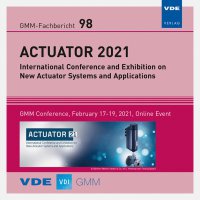Energy Harvesting System by Piezoelectric Power Generation using Mechanical-acoustic Coupling
Conference: ACTUATOR - International Conference and Exhibition on New Actuator Systems and Applications 2021
02/17/2021 - 02/19/2021 at Online
Proceedings: GMM-Fb. 98: ACTUATOR 2021
Pages: 4Language: englishTyp: PDF
Authors:
Tsuchiya, Mika; Tsuchiya, Hirotarou; Adachi, Tomomi; Uchida, Helmut Takahiro (Department of Precision Engineering, School of Engineering, Tokai University, Japan)
Moriyama, Hiroyuki (Department of Prime Mover Engineering, School of Engineering, Tokai University, Japan)
Iwamori, Satoru (Department of Mechanical Engineering, School of Engineering, Tokai University, Japan)
Abstract:
In recent years, many researchers have focused on the energy harvesting from the light, heat, vibration, etc., especially vibration energy harvesting has been reached for many applications. On the other hand, the acoustic energy is extremely smaller than the mechanical energy such as excitation energy. Thus, it has been discarded as noise except a few applications before. Previously, the authors proposed the electricity generation characteristics of a new energy-harvesting system with piezoelectric elements. The proposed system is composed of a rigid cylinder and thin plates at both ends. The piezoelectric elements are installed at the centers of both plates, and one side of each plate is subjected to a harmonic point force. In this system, vibration energy is converted into electrical energy via electromechanical coupling between the plate vibration and piezoelectric effect. In addition, the plate vibration excited by the point force induces a self-sustained vibration at the other plate via mechanical-acoustic coupling between the plate vibrations and an internal sound field into the cylindrical enclosure. Therefore, the electricity generation characteristics should be considered as an electromechanicalacoustic coupling problem. In this study, we investigated two kind of the material of the plates and two kind of excitation conditions. In the present conditions, two materials of the plates of aluminum(Al) and copper (Cu) are applied. As the result, we clarified the proposed system is almost unaffected by material of plates and greatly influenced by excitation conditions.


